


xxxxxOne of the world’s greatest fiction writers, the Frenchman Honoré de Balzac, is remembered especially for his The Human Comedy, a vast series of novels and short stories which includes Eugénie Grandet of 1833, Le Père Goriot of 1834, and Cousin Bette of 1846. He filled his 90 or so volumes with a huge gallery of characters from all walks of life -
HONORÉ DE BALZAC 1799 -
(G3b, G3c, G4, W4, Va)
Acknowledgements
Balzac: detail, by the French painter Louis Boulanger (1806-
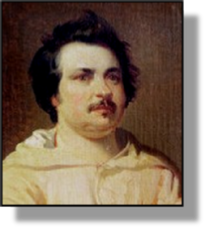 xxxxxThe realist novelist Honoré de Balzac is one of the world’s greatest fiction writers, a reputation earned by his The Human Comedy, a vast series of novels and short stories written over some twenty years. No novelist before or since has created so many diverse, convincing characters, nor brought to life in so realistic a fashion a period in the life of a nation across so wide a spectrum of society. Among his most famous works were Eugénie Grandet of 1833, Le Père Goriot of 1834, and Cousin Bette of 1846.
xxxxxThe realist novelist Honoré de Balzac is one of the world’s greatest fiction writers, a reputation earned by his The Human Comedy, a vast series of novels and short stories written over some twenty years. No novelist before or since has created so many diverse, convincing characters, nor brought to life in so realistic a fashion a period in the life of a nation across so wide a spectrum of society. Among his most famous works were Eugénie Grandet of 1833, Le Père Goriot of 1834, and Cousin Bette of 1846.
xxxxxBalzac was born in Tours. As a child he spent six fairly unhappy years in a boarding school at Vendôme and, when at home, was somewhat dominated by his mother. He studied law in Paris from 1818 to 1821, and then worked for a short time as a lawyer’s clerk, but his ambition was to be a writer. In 1822 he got his way and was given a meagre allowance by his father to launch him on a literary career. He did not make an auspicious start. His first works, such as his tragedy Cromwell and a handful of terror tales and historical novels, were not successful. He was forced to live a hand to mouth existence for some six years, and his involvement in printing and publishing in 1825 -
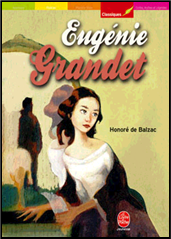
xxxxxHis breakthrough came in 1829 with the publication of his Les Chouans, a story about Breton peasants in the French Revolution, written much in the style of the Scottish writer Walter Scott. This, together with The Physiology of Marriage, produced the same year, and his The Wild Ass’s Skin of 1831 launched him upon an increasingly successful literary career. Ambitious by nature, extremely hard working, and supremely confident in his own ability, in 1834 he came up with the idea of producing a series of novels and shorter works under the title The Human Comedy. Initially he set himself the task of writing no less than 140 volumes in order to cover every aspect of French society from the outbreak of the Revolution to his own day, mainly to be seen through the eyes of the middle class. In the event he completed about 90 volumes over the next sixteen years, writing three or four novels a year together with short stories (novellas), historical dramas, and a vast number of articles and reviews. These earned him great popularity as a writer.
xxxxxIn his novels and short stories Balzac showed an amazing ability to place his characters firmly and squarely in the real world in which they lived and moved. He accomplished this by his remarkable powers of detailed description, which not only created the appearance and personality of his characters -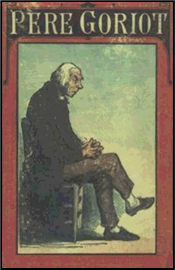 jealousy, ambition, meanness, naivety or vindictiveness. And although he indulged in some romance and melodrama, these characters lived in the world as it existed, a society which -
jealousy, ambition, meanness, naivety or vindictiveness. And although he indulged in some romance and melodrama, these characters lived in the world as it existed, a society which -
xxxxxBalzac was, himself, a larger than life character, never lost for words, jovial by nature, and always aware of his own ability. In his early days his mistress was Laure de Berny, a woman over twenty years his senior, but when he gained celebrity status he was never short of fashionable admirers from high society. One of these was the Polish countess Eveline Hanska. He first met her in 1832, and their correspondence over many years resulted in his Letters to a Foreigner. They eventually married, but he died five months after the wedding, aged 51, worn out, as he once put it, by long hours as “a galley slave of the pen”. Among those writers who readily acknowledged his ability were the American novelist James Fenimore Cooper and the English writer D.H. Lawrence. For his part, Balzac admired the work of Stendhal, and numbered George Sand among his friends.
xxxxxAmong his other major works were The Quest for the Absolute (1834), The Lily of the Valley (1836), The Village Curate (1839), A Shady Business (1841), The Black Sheep (1842), A Harlot High and Low (1847) and Cousin Pons (1847). He also wrote Ribald Tales in 1833, and Droll Stories over a five year period. One of his best known short stories was A Passion in the Desert (1830).
 xxxxxIncidentally, Balzac’s capacity for work was phenomenal and was matched only by that of his contemporary giants Victor Hugo and Alexandre Dumas. As a struggling young writer he used to start work before dawn, and scribble away for fourteen to sixteen hours, and this was the regime he followed for the rest of his life, save for when he was out on the town! We are told that to keep awake during the day and stimulate his powerful imagination, he would drink endless mugs of black coffee. This contributed to his debts -
xxxxxIncidentally, Balzac’s capacity for work was phenomenal and was matched only by that of his contemporary giants Victor Hugo and Alexandre Dumas. As a struggling young writer he used to start work before dawn, and scribble away for fourteen to sixteen hours, and this was the regime he followed for the rest of his life, save for when he was out on the town! We are told that to keep awake during the day and stimulate his powerful imagination, he would drink endless mugs of black coffee. This contributed to his debts -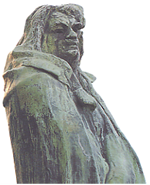 more, it appears that he could not or would not write a word if he did not have a lighted candle by his side, even in broad daylight!
more, it appears that he could not or would not write a word if he did not have a lighted candle by his side, even in broad daylight!
xxxxx…… The great French sculptor Auguste Rodin produced his Monument to Balzac in the 1890s. He saw it as one of his greatest works, but, to his annoyance, the society that commissioned it would not accept it, seeing it as an unfinished and grotesque lump.
xxxxxThe illustration on the cover of Le Père Goriot above was by the brilliant French caricature artist Honoré Daumier (1808-
xxxxxHe was born at Marseilles in 1808, the son of a picture framer, and, as a young man, worked as a lithographer in Paris. An ardent republican, he began contributing to the comic journal La Caricature in 1831, and five years later joined the staff of the magazine Le Charivari. Via these and other periodicals, no section of society escaped his masterly series of penetrating lithographs, some 4,000 in number. In his social commentary, he took to task, above all, the injustice of the legal system, the corrupt regime of the July Monarchy (the reign of Louis-
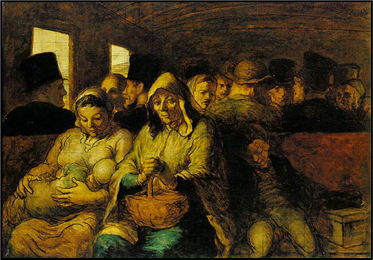 xxxxxIn the late 1840s he began to paint in oils, and his works in this genre, providing as they did a dramatically simple portrayal of everyday themes in a style akin to impressionism, were very highly regarded by the French painters Edouard Manet and Claude Monet. Among his best paintings was The Third Class Carriage, one of the versions of which is illustrated here. The French poet Charles Baudelaire greatly admired his work, and he was befriended by his fellow countryman, the landscape artist Camille Corot, who provided him with a house in his later years. In certain aspects of his style he owed much to the Spanish artist Francisco de Goya. He later produced sculptures of some of his caricatures both in clay and bronze. Towards the end of his life, Daumier gradually lost his sight, and he was nearly blind when he died in 1879. Illustrated below are: The Chess Players, Two Sculptors, and The Uprising.
xxxxxIn the late 1840s he began to paint in oils, and his works in this genre, providing as they did a dramatically simple portrayal of everyday themes in a style akin to impressionism, were very highly regarded by the French painters Edouard Manet and Claude Monet. Among his best paintings was The Third Class Carriage, one of the versions of which is illustrated here. The French poet Charles Baudelaire greatly admired his work, and he was befriended by his fellow countryman, the landscape artist Camille Corot, who provided him with a house in his later years. In certain aspects of his style he owed much to the Spanish artist Francisco de Goya. He later produced sculptures of some of his caricatures both in clay and bronze. Towards the end of his life, Daumier gradually lost his sight, and he was nearly blind when he died in 1879. Illustrated below are: The Chess Players, Two Sculptors, and The Uprising.
Including:
Honoré Daumier
and Stendhal

W4-
xxxxxThe French writer Stendhal (1783-
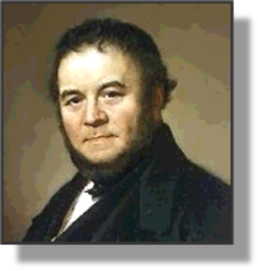 xxxxxThe French novelist and essayist Stendhal (1783-
xxxxxThe French novelist and essayist Stendhal (1783-
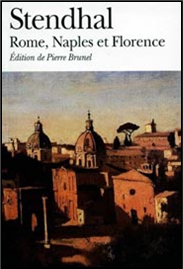 xxxxxHe was born in Grenoble, the son of a wealthy lawyer, and attended the school in the town. At the age of 17 he made his way to Paris and took a commission in Napoleon’s army in Italy. He abandoned military service in 1802 to enjoy life in Paris, but re-
xxxxxHe was born in Grenoble, the son of a wealthy lawyer, and attended the school in the town. At the age of 17 he made his way to Paris and took a commission in Napoleon’s army in Italy. He abandoned military service in 1802 to enjoy life in Paris, but re-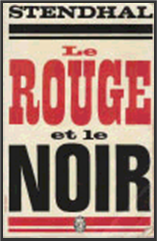 he was accused of supporting the Italian independence movement. He was expelled, and he returned to Paris. There he was active in the social life of the city and, with the accession of Louis Philippe in 1830, he was appointed first consul in Trieste, Italy, and a year later was moved to Civitavecchia. It was at Civitavecchia, a small town near Rome, that he wrote the first of his great novels, The Red and the Black. His second one, The Charterhouse of Parma, was written in Paris during a long period of leave in the late 1830s.
he was accused of supporting the Italian independence movement. He was expelled, and he returned to Paris. There he was active in the social life of the city and, with the accession of Louis Philippe in 1830, he was appointed first consul in Trieste, Italy, and a year later was moved to Civitavecchia. It was at Civitavecchia, a small town near Rome, that he wrote the first of his great novels, The Red and the Black. His second one, The Charterhouse of Parma, was written in Paris during a long period of leave in the late 1830s.
xxxxxBoth were set amid the troubles and disillusionment of the Restoration period, a period that followed hard on the promise and opportunities of the Napoleonic era. And both are centred around a young man’s search for happiness The Red and the Black provides an analytical study of contemporary French society by following the career of Julien Sorel, an ambitious carpenter’s son from the provinces who employs seduction, among other means, to rise above his station. By his marriage to a nobleman’s daughter, an army commission, and his connection with the Church, he comes near to 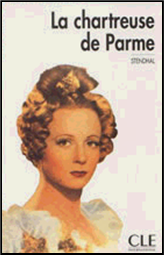 reaching his goal until his humble origins are finally revealed. The Charterhouse of Parma traces the fortunes of Fabrizio de Dongo, a young, naïve aristocrat who enters the Church as a means of advancement, and becomes embroiled in political intrigue. Set in the court of Parma in Stendhal’s beloved Italy, it is a work of varied passions in which the principal characters are sensitively drawn.
reaching his goal until his humble origins are finally revealed. The Charterhouse of Parma traces the fortunes of Fabrizio de Dongo, a young, naïve aristocrat who enters the Church as a means of advancement, and becomes embroiled in political intrigue. Set in the court of Parma in Stendhal’s beloved Italy, it is a work of varied passions in which the principal characters are sensitively drawn.
xxxxxHis other works included his famous autobiographical work De l’amour (On Love) of 1822, a thinly disguised study of his own emotional experiences; The Life of Rossini the following year; his first novel Armance in 1827, Memoirs of a Tourist written in 1838, and his Private Diaries, published posthumously fifty years later. His unfinished, autobiographical works, Memoirs of an Egotist, The Life of Henri Brulard, and the novel Lucien Leuwen, all containing some of his finest writing, were not published until the 1890s. Stendhal had his home at Civitavecchia from 1831 onwards, but visited Paris at times, and it was there in 1842, during a period of sick leave, that he died of apoplexy.
xxxxxLike Balzac, Stendhal was a realist but, as a pioneer in psychological analysis, his depth of character study was not always easy to fathom, and a little before its time. As a result, apart from his writings on art and tourism, his work gained scant recognition during his lifetime. He himself spoke of “the Happy Few”, those who one day would appreciate his genius! But out of this penetrating, intensive personality study he created a new type of hero, one who -
xxxxxIncidentally, “Stendhal” was only one of a number of pseudonyms adopted by Marie Henri Beyle. He didn’t get on with his father, and this might be one reason why he took on other names. Why he chose the name Stendhal is not clear. One theory is that it was named after the German city of Stendal, the birthplace of the German art historian Johann Winckelmann, whom Stendhal held in high esteem.



